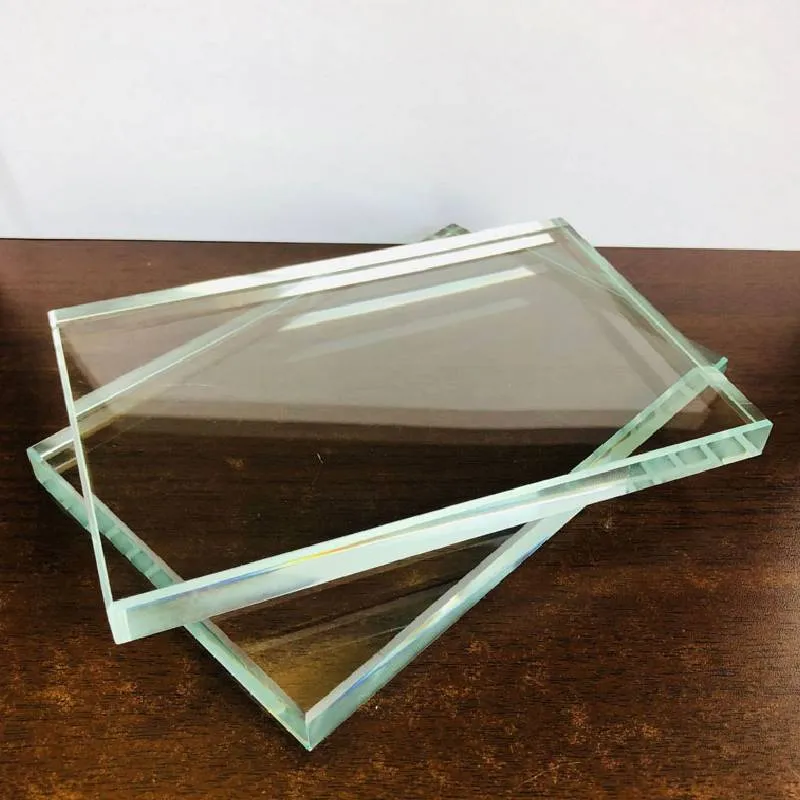Understanding Tempered Glass and Laminated Glass Key Differences and Applications
In the world of modern architecture and design, glass plays a crucial role, both aesthetically and functionally. Among the varieties of glass available, tempered glass and laminated glass stand out due to their unique properties and applications. This article will explore the characteristics, advantages, and typical uses of each type of glass, illustrating their significance in contemporary construction and design.
Tempered Glass Strength and Safety
Tempered glass, also known as toughened glass, is produced through a process of extreme heating and rapid cooling. This treatment increases its strength compared to standard glass, making it about five to six times stronger than untreated glass of the same thickness. The tempering process results in a material that can withstand significant stress, allowing it to endure high impacts, thermal fluctuations, and even bending forces.
One of the most notable safety features of tempered glass is how it breaks. Instead of shattering into sharp, jagged shards, tempered glass fractures into small, blunt pieces, minimizing the risk of injury. This property makes tempered glass an ideal choice for environments where safety is a primary concern, such as in shower doors, glass railings, and facades.
Moreover, tempered glass is typically used in applications that require durability and resilience. Common uses include storefronts, car windows, and glass table tops. In architectural designs, tempered glass is often favored in large window installations or curtain walls, providing unobstructed views while still upholding strength and safety standards.
Laminated Glass Versatility and Sound Insulation
Laminated glass, on the other hand, consists of two or more layers of glass bonded together with an interlayer, usually made of polyvinyl butyral (PVB) or ethylene-vinyl acetate (EVA). This process imparts unique properties that differentiate it from tempered glass. One of the primary benefits of laminated glass is its ability to hold together when shattered. The interlayer keeps the glass panes intact, preventing them from falling apart and reducing the risk of injury — a feature that is particularly valuable in skylights and curtain walls, where glass safety is paramount.
tempered glass and laminated glass
Another advantage of laminated glass is its sound insulating properties. The interlayer absorbs sound vibrations, making it an excellent choice for buildings located in noisy urban environments or near highways. This acoustic performance enhances the comfort of occupants within the space, making laminated glass a go-to option for residential buildings, offices, and hotels.
Beyond safety and soundproofing, laminated glass is also favored for its ability to filter harmful UV rays while still allowing ambient light to enter. This quality helps protect interior furnishings and reduces heat build-up, contributing to energy efficiency. Laminated glass applications include skylights, sunrooms, and windows, where natural light is desired without compromising safety or comfort.
Comparing the Two Types of Glass
While both tempered and laminated glass are engineered for enhanced safety and performance, they serve different purposes based on their inherent properties. Tempered glass is ideal for situations requiring strength and impact resistance, while laminated glass excels in environments where noise reduction and UV protection are essential.
Designers and architects often choose between these two types of glass based on specific project requirements. In some cases, they may even opt to use both materials simultaneously. For example, a building may feature laminated glass windows for sound insulation while utilizing tempered glass in structural elements like balustrades and doors.
Conclusion
In conclusion, tempered glass and laminated glass are both essential materials in modern construction, each with unique benefits tailored to specific applications. Tempered glass provides exceptional strength and safety, while laminated glass offers versatility, sound insulation, and UV protection. The choice between the two depends largely on the intended use and desired performance criteria, reflecting the evolving demands of contemporary architecture and interior design. By understanding the advantages and applications of these types of glass, builders and designers can make informed decisions that enhance safety, functionality, and aesthetic appeal in their projects.
 Afrikaans
Afrikaans  Albanian
Albanian  Amharic
Amharic  Arabic
Arabic  Armenian
Armenian  Azerbaijani
Azerbaijani  Basque
Basque  Belarusian
Belarusian  Bengali
Bengali  Bosnian
Bosnian  Bulgarian
Bulgarian  Catalan
Catalan  Cebuano
Cebuano  Corsican
Corsican  Croatian
Croatian  Czech
Czech  Danish
Danish  Dutch
Dutch  English
English  Esperanto
Esperanto  Estonian
Estonian  Finnish
Finnish  French
French  Frisian
Frisian  Galician
Galician  Georgian
Georgian  German
German  Greek
Greek  Gujarati
Gujarati  Haitian Creole
Haitian Creole  hausa
hausa  hawaiian
hawaiian  Hebrew
Hebrew  Hindi
Hindi  Miao
Miao  Hungarian
Hungarian  Icelandic
Icelandic  igbo
igbo  Indonesian
Indonesian  irish
irish  Italian
Italian  Japanese
Japanese  Javanese
Javanese  Kannada
Kannada  kazakh
kazakh  Khmer
Khmer  Rwandese
Rwandese  Korean
Korean  Kurdish
Kurdish  Kyrgyz
Kyrgyz  Lao
Lao  Latin
Latin  Latvian
Latvian  Lithuanian
Lithuanian  Luxembourgish
Luxembourgish  Macedonian
Macedonian  Malgashi
Malgashi  Malay
Malay  Malayalam
Malayalam  Maltese
Maltese  Maori
Maori  Marathi
Marathi  Mongolian
Mongolian  Myanmar
Myanmar  Nepali
Nepali  Norwegian
Norwegian  Norwegian
Norwegian  Occitan
Occitan  Pashto
Pashto  Persian
Persian  Polish
Polish  Portuguese
Portuguese  Punjabi
Punjabi  Romanian
Romanian  Russian
Russian  Samoan
Samoan  Scottish Gaelic
Scottish Gaelic  Serbian
Serbian  Sesotho
Sesotho  Shona
Shona  Sindhi
Sindhi  Sinhala
Sinhala  Slovak
Slovak  Slovenian
Slovenian  Somali
Somali  Spanish
Spanish  Sundanese
Sundanese  Swahili
Swahili  Swedish
Swedish  Tagalog
Tagalog  Tajik
Tajik  Tamil
Tamil  Tatar
Tatar  Telugu
Telugu  Thai
Thai  Turkish
Turkish  Turkmen
Turkmen  Ukrainian
Ukrainian  Urdu
Urdu  Uighur
Uighur  Uzbek
Uzbek  Vietnamese
Vietnamese  Welsh
Welsh  Bantu
Bantu  Yiddish
Yiddish  Yoruba
Yoruba  Zulu
Zulu 

